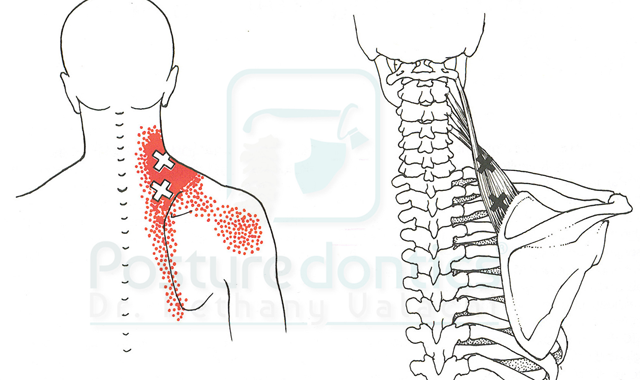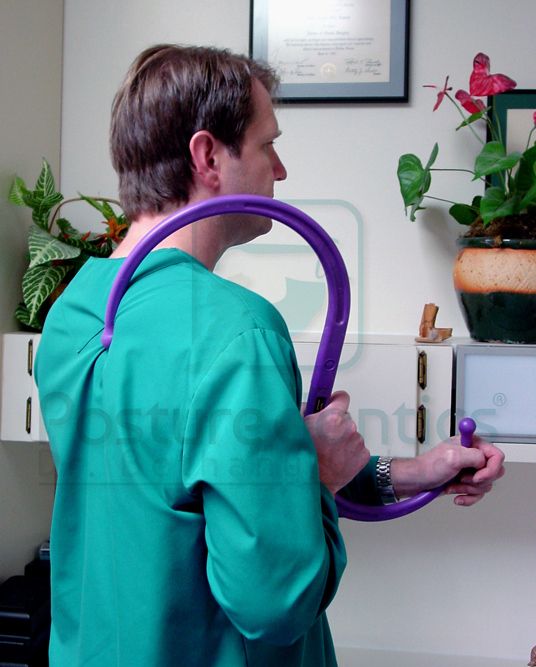How to treat pain caused by trigger points
Trigger points are a primary cause of pain for many dental professionals, and it’s important to treat them as soon as they present.

Why should dental professionals consider addressing their painful trigger points? Pain clinic doctors who treat trigger points state they’re the primary cause of pain in about 75 percent of cases.
Consider the facts:
- 80 percent of dental professionals complain of neck and shoulder pain.
- The upper trapezius muscles are the most active muscles in dentistry.
- Upper trapezius trigger points are the primary trigger points responsible for neck pain and headaches.
- The upper traps are the most reactive muscles in your body to emotional stress.
- Left untreated, trigger points can lead to myriad more serious neuromuscular syndromes.
- To effectively resolve most trigger points, they should be treated multiple times (three to five times) per day.
Fig. 1

Painful trigger points are common among dental operators due to several risk factors, including body asymmetry, poor posture, poor body mechanics, repetitive movement, lack of movement, sustained muscle contraction and mental stress. Unfortunately trigger points are one of the most frequently misunderstood causes of pain and are often the cause of “mysterious” pain syndromes that may be overlooked in traditional Western medicine.
Related article: 5 ergonomics tips that could save your career
Trigger points are a common cause of pain in the general population. These painful points can develop suddenly due to whiplash, falls, fractures, dislocation, joint sprains or excessive exercise, or gradually due to muscle overload, poor posture, mental stress and muscle imbalances. Trigger points associated with these events can linger for years afterward if left untreated. I have treated men in their 40s who have been plagued for decades with painful trigger points resulting from high school football injuries.
Among dentists and hygienists, trigger points occur in numerous muscles. Two commonly occurring areas are the upper trapezius and levator scapulae muscles (Figs. 1-2). Trigger points in the upper trapezius muscles are a primary source of “tension neckaches.” Levator scapulae trigger points can cause pain in the crook of the neck and shoulder. This can lead to stiffness in the neck, making it difficult to look over the shoulder. If allowed to persist untreated, some trigger points can cause compression on nerves and contribute to syndromes such as thoracic outlet syndrome or pronator teres syndrome (a carpal tunnel-type pain). Other trigger points, such as those in the suboccipital muscles, can be precipitated by an ergonomic issue, such as forward head posture that leads to tension-type headaches. In the operatory, trigger points can develop from improper positioning, poorly adjusted scopes and myriad ergonomic pitfalls.
Fig. 2

Specific operatory modifications are therefore frequently necessary to avoid recurrences of specific trigger points.
Treatment of trigger points
It’s important to relieve trigger points as soon as possible to restore nutrient flow to the muscle, prevent muscle imbalances and prevent compression on nerves.
Various approaches to treating trigger points include:
- Dry needling
- Active release therapy (ART)
- Manual trigger point therapy release
- Spray and stretch technique
- Wet needling - trigger point injection
- Self-treatment
Although professional treatment is often most effective in treating trigger points, it’s difficult to schedule appointments as soon or as frequently as needed. Due to costs, time constraints or convenience, self-treatment is often a more practical and economical consideration. You can treat the pain immediately without waiting for an appointment, paying for the treatment or having to depend on someone else.
Self-treatment of trigger points
You can learn to effectively self-treat your own trigger points at home or at the office. A very effective combination is trigger point self-massage followed by a sustained stretch of the affected muscle. You may use a tennis ball (or balls) in a tube sock or a smaller hard rubber ball against a wall or on the floor to treat trigger points on the flat of your back and buttocks.
Fig. 3

However, some of the most problematic trigger points (e.g., upper trapezius) are difficult to treat with this method. Most trigger points can be reached using a self-massage tool (Fig. 3). Use a trigger point reference book that maps out trigger points and the corresponding referral areas to help you easily target your problem areas.
- Locate the trigger point.
- Apply deep pressure for five slow counts, then massage slowly across the point for five counts.
- Alternate between deep pressure and slow massage for one minute per trigger point - no longer.
- Aim at a pain level that “hurts so good” (about five on a scale of one to 10) Don’t press too hard on a trigger point, as this can worsen the trigger point and your pain.
- Perform a gentle stretch (30 seconds to 60 seconds) to the affected area.
- Treat the trigger point at least three to five times per day, or until pain decreases to a level of one to two on the pain scale.
If pain persists longer than two days, or you have any red-flag symptoms, see a physician.
Related article: 4 movement strategies for pain-free dental career
There are multiple strategies that anyone can learn to use to help decrease work-related pain. Your body type, personality, fitness, congenital anomalies and lifestyle are all considerations in determining the best intervention for you.
Dr. Valachi teaches dental professionals how to self-treat the most common seven painful trigger points in dentists in an easy instructional video. For more information, email info@posturedontics.com.